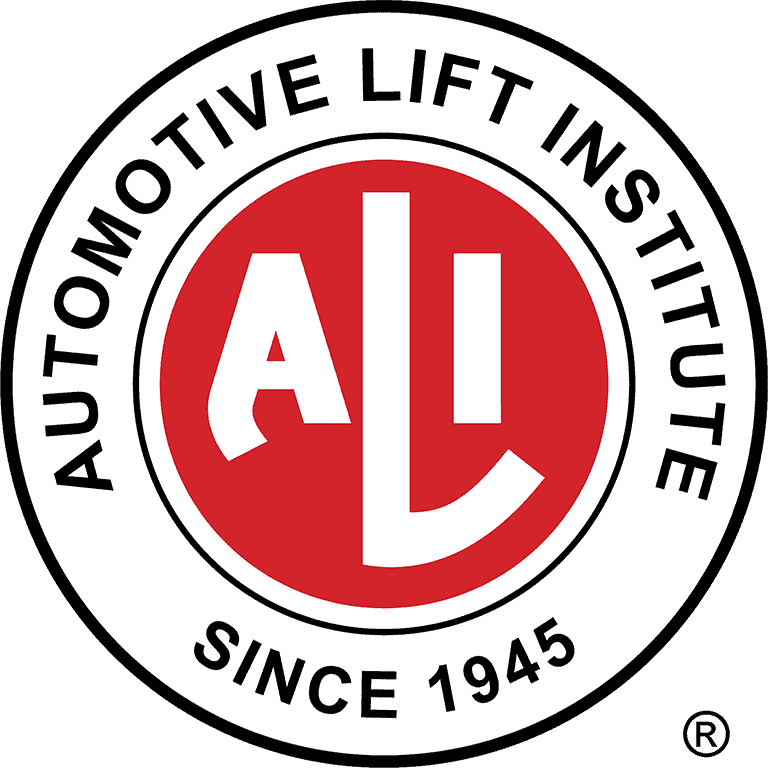Guidelines For Buying The Lift That Provides The Best Value
01-1-2010Guidelines for buying the lift that provides the best value
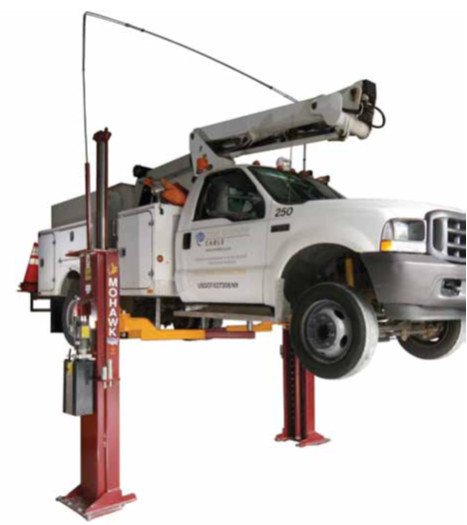 The objective of any vehicle liftbuying process should be to get a quality lift properly matched to its intended application. Selecting the appropriate lift will pay back in enhanced technician and shop productivity and safety, plus reliable, long lift life.
The objective of any vehicle liftbuying process should be to get a quality lift properly matched to its intended application. Selecting the appropriate lift will pay back in enhanced technician and shop productivity and safety, plus reliable, long lift life.
Vehicle lifts are intended to help speed more effective vehicle maintenance for greater shop productivity. Designed to safely raise and hold up vehicles, they facilitate maintenance by allowing technicians to work underneath the vehicle while standing up so they may work in a more natural position. With greater access, visibility and clearance to work, and the ability to have tools and parts conveniently located nearby, technicians can be more efficient and productive while working more safely – a positive impact to a shop’s bottom line.
Another benefit of vehicle lifts is improved vehicle maintenance. By being able to walk under a vehicle and better see underneath, a technician can more easily spot any “trouble” signs such as leaks, wear or missing or broken parts, which helps to prevent a more expensive breakdown.
Conversely, a lift that is not right for the job will have detrimental effects. Poorly designed and constructed lifts, or lifts that don’t have the necessary lifting capacities, arm configurations, adapters and optional equipment, can be overworked. This leads to additional maintenance or more frequent repair, causing added downtime and reduced shop productivity.
Productivity and efficiency can be further impacted because an “improper” or poorly designed lift will hamper a technician’s productivity, costing the loss of valuable “billable” time. Simply stated, some lifts allow a technician to work faster than other models.
The consensus among many lift manufacturers is that a light duty vehicle lift is one that is capable of lifting a vehicle with a gross vehicle weight 7,000 to no more than 16,000 pounds. Mohawk Lifts, however, recommends a load-lifting capacity of up to 25,000 pounds, “as the readers of Fleet Maintenance have a more varied fleet than does a general repair shop,” says Steve Perlstein, owner of Mohawk Lifts.
The higher capacity helps insure lift stability in those instances when there is a vehicle on the lift that is heavily loaded on the rear, which puts a lot of stress on a lift by flexing it backwards, or when an engine, transfer case or transmission is removed, which changes the center of gravity, he says.
DESIGN SPECIFIC
There are several main types of light duty vehicle lifts used in maintenance facilities:
• In-ground lifts – These come with one or two posts and are available with a range of vehicle contact configurations, including three-stage arms and pad adapters.
• Two-post surface lifts – These have two sets of lifting arms attached to two columns. The vehicle is driven between the columns. The arms are then manually positioned under the vehicle to lift it at designated pickup points on the frame. Industry-wide, two-thirds of all lifts sold in the U.S. are two-post, side-by-side above-ground lifts, notes Perlstein. The main reason is that these lifts allow the most unobstructed under access to the raised vehicle. Along with allowing the operator to safely raise a vehicle to a comfortable working height without restricting under vehicle access, two-post lifts provide another key benefit, adds Jeff Kritzer Sr. senior vice president of sales and marketing for BendPak. “The wheels and assemblies hang free, making it the most convenient method for performing wheel service. We estimate that about 50 percent of all ‘repairs’ are wheel service related, so it’s easy to see why two-post lifts are generally preferred by commercial shops and garages.”
• Low/mid-rise lifts – These lifts are designed to raise vehicles two to four feet off the ground. Pad contact configurations are used for quick-lifting operations.
• Four-post surface lifts – With these types of lifts, the vehicle is driven onto runways which are then raised. Drive-on lifts are the fastest lifts to use because no set-up is required to raise the vehicle, says Rotary Lift’s directory of marketing John Rylee.
• Scissor lifts – These use a scissor design to lift the vehicle without the need for permanent columns. They are available as pad-contact models for quick-lifting operations or with wheel-engaging runways for easy drive-on lifting.
• Mobile column lifts – This design consists of four or six portable columns linked by a common control circuit. The columns are wheeled to the vehicle, then connected together via control cables for synchronized lifting. The columns engage at the vehicle’s wheels.
Each type of lift offers various features, benefits, advantages and minuses, says Pete Liebetreu, product manager for lifts and racks at Hunter Engineering.
BASIC DIFFERENTIATORS
Sound purchase decisions come from examining some key considerations. The number one consideration is the types and number of vehicles being serviced, maintains Mohawk Lifts’ Perlstein. “Determine ahead of time what vehicles you’re likely going to be lifting and how much they weigh,” BendPak’s Kritzer adds. “Decide is this lift going to be for exclusively for vehicle repair, or will it also be used for vehicle storage.” Among the other chief considerations:
• Type and configuration of the lift.
• Accuracy and speed at which a vehicle can be properly positioned on the lift.
• Types of maintenance and repair services being performed.
• Efficiency, versatility and productivity features that make the technician’s job faster, more accurate, safer and easier.
• Ergonomics and worker safety.
• Lift maintenance requirements.
• Lift quality (welding and material).
• Lift origin.
• Lift standards and certifications.
• Company history and reputation.
• Lift warranty.
• Accessories and options.
• After-sale support.
It is also important to think about facility layout – bay widths, ceiling heights, etc; future shop needs; and what types of vehicle maintenance and servicing may be added later on, says Liebetreu of Hunter Engineering. So, too, is shopping for the lowest overall total cost of ownership, not just a low purchase price.
“Figure out if a company builds the cheapest lift to buy or the least expensive
lift to own,” Perlstein advises. “Price and cost are two different things.”
“Make sure the value that you’re getting out of the vehicle lift matches how
much you’re going to pay,” adds Kritzer. “It doesn’t hurt to shop around for
the best deal, as long as you stick to a pre-determined list of essentials that
you are unwilling to compromise on.”
SAFETY ASPECTS
Vehicle lift manufacturers stress the importance of considering a lift’s safety features. Unlike other shop equipment, they say, if a lift fails, a technician can be seriously injured or killed.
“A lift is a product that you can’t build good enough,” maintains Perlstein. Consideration ought to be given to a lift’s design, including mechanical safety locks that engage at various heights; wide column footprints – the wider the stance, the better the stability; types and size of bearings; and cylinders and lifting mechanism. “The ‘beefier’ the quality, construction and material used, the better the lift will perform and last.”
When comparing lift construction, he uses the analogy: “You’re going to jump out of an airplane tomorrow. Do you want the cheapest parachute you can get, or do you want the best one? You don’t want any size vehicle falling.”
LIFT STANDARDS
Because not all vehicle lifts are built to the same levels of quality, it is also advisable to look for the certifications and standards. “ALI (Automotive Lift Institute) certification is probably the most important,” says Liebetreu. Lifts that have this certification will have a gold label, signifying that the lift has been independently tested and verified to meets American National Standards Institute (ANSI) performance and safety standards that apply to automotive service lifts throughout the North American lift market, adds Rotary Lift’s Rylee.
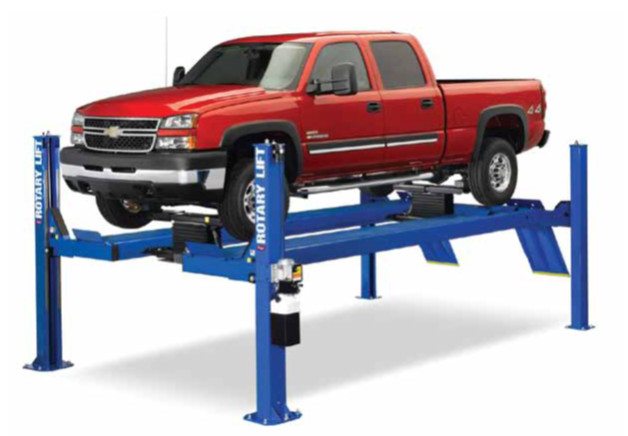
Vehicle lifts come in a range of designs and configurations, including in-ground, two-post, mobile column, low/mid-rise, scissor and four-post surface models (shown here), with each offering various features, advantages and benefits. Photo courtesy of Rotary Lift.
“The ANSI/OSHA safety verification and testing shows that the lift meets the
one and only North American recognized safety standard in the lift industry,
Perlstein notes.
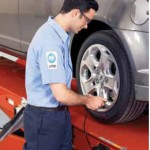 An industry trade association founded by vehicle lift manufacturers in North America, the Automotive Lift Institute’s mission is to promote the safe design, construction, installation and use of automotive lift products. ALI contracts with Intertek Testing Services (ETL), a global product testing, inspection and certification organization, to fill the role of certification program administrator. As such, ETL conducts third-party tests of vehicle lifts to determine whether they meet the set safety and performance standards.
An industry trade association founded by vehicle lift manufacturers in North America, the Automotive Lift Institute’s mission is to promote the safe design, construction, installation and use of automotive lift products. ALI contracts with Intertek Testing Services (ETL), a global product testing, inspection and certification organization, to fill the role of certification program administrator. As such, ETL conducts third-party tests of vehicle lifts to determine whether they meet the set safety and performance standards.
“ALI certification is an easy way to determine if you’re being sold a premium automotive lift or a bill of goods,” says BendPak’s Kritzer. “ALI, which operates as a watchdog group for the entire automotive lifting industry, exists to not only protect and inform consumers, but also to ensure a high level of safety and engineering in the design of each lift that carries its badge. Automotive lifts are very safe, as long as they are properly operated and manufactured in such a way that minimizes the potential for user error.”
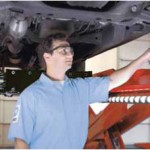 According to R. W. (Bob) O’Gorman, ALI president, the ANSI standards that apply to automotive service lifts are:
According to R. W. (Bob) O’Gorman, ALI president, the ANSI standards that apply to automotive service lifts are:
• The American National Standard ANSI/ALI ALCTV (2006 edition) –
Safety Requirements For Construction, Testing and Validation.
• The American National Standard ANSI/ALI ALOIM (2008 edition) –
Safety Requirements For Operation, Inspection and Maintenance.
• The American National Standard ANSI/ALI ALIS (2009 edition) – Safety
Numerous options and accessories are available for vehicle lifts, like these lighting and inflation stations, neither of which require additional or exposed electrical cords or hoses, which helps to keep the work area clear.
Requirements For Installation and Service.
Since 2003, ANSI/ALI ALCTVs has been included as part of the International Building Code (IBC), O’Gorman explains. The IBC has been adopted at the state or local level in all 50 states, plus Washington, D.C. In Canada, agencies such as Worksafe BC, the Ontario Ministry of Labour and the OHS groups responsible for Labrador/New Foundland and Alberta have all adopted ANSI/ALCTV.
Among other things, the ANSI/ALI ALCTVs provides general requirements for the strength of all vehicle lift components and for general requirements covering drive components, electrical components, control devices and speeds, says Rotary Lift’s Rylee. They also cover specific requirements for a wide variety of elements, including welding, runways, adapters, swing arms, travel limits, load-holding devices, accessory equipment and other safety considerations.
Additionally, there are ANSI/ALI ALCTV requirements for quality assurance systems and procedures, testing and validation, and for governing lift instructions and labeling, he adds.
O’Gorman says standards and certification programs are important because the buyer of the product is extended protection, and companies are held accountable for compliance to those standards and programs as a matter of life safety and buyer confidence.
ACCESSORY CERTIFICATION
It is not well know that accessories and adapters are also subject to certification. The ALI states that “the use of noncertified options or accessories on a certified lift will void the certification of the lift,” Rylee points out.
“If OSHA comes to do a shop inspection and doesn’t see a certification sticker, the lift could be
placed out of service,” adds Perlstein. “A lift can’t be certified once it is in the field, so it will have to be replaced – and that is quite an expensive undertaking.”
While certified vehicle lifts are identifiable by the gold “ALI Certified/Validated by ETL” label, certified accessories are not as recognizable. ALI provides a list of certified accessories online at www.ali-directory.org. The list is searchable by manufacturer, model number or rated capacity. Certification of vehicle lifts is voluntary. There are no legal requirements that lifts sold in the U.S. be certified to meet the standards, regardless of where the lifts are manufactured.
“Now that all states require that any lift installed be certified to meet ANSI/ALI standards, it is possible that a shop could buy a non-certified lift, but not be able to have it installed legally,” explains Rylee. “In addition to risking having the lift tagged out of service at a subsequent shop inspection, installing a non-certified lift also puts technician productivity and safety at risk.” Both Rylee and Mohawk Lift’s Perlstein called attention to an influx of cheap, off-shore light duty lifts, especially two-post models that have been coming into the industry in the past decade.
“Responsibility for buying and installing certified lifts rests with the customer,” they emphasize.
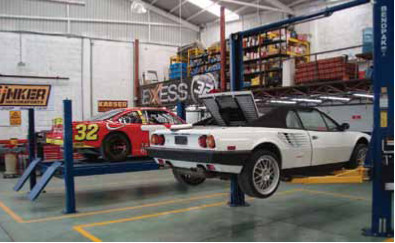
Lift purchase considerations include facility layout, types of vehicles to be worked on, accuracy and speed at which a vehicle can be properly positioned on the lift, kinds of services performed, ergonomics and worker safety and features that make the technician’s job faster, more accurate and easier. Photo courtesy of BendPak.
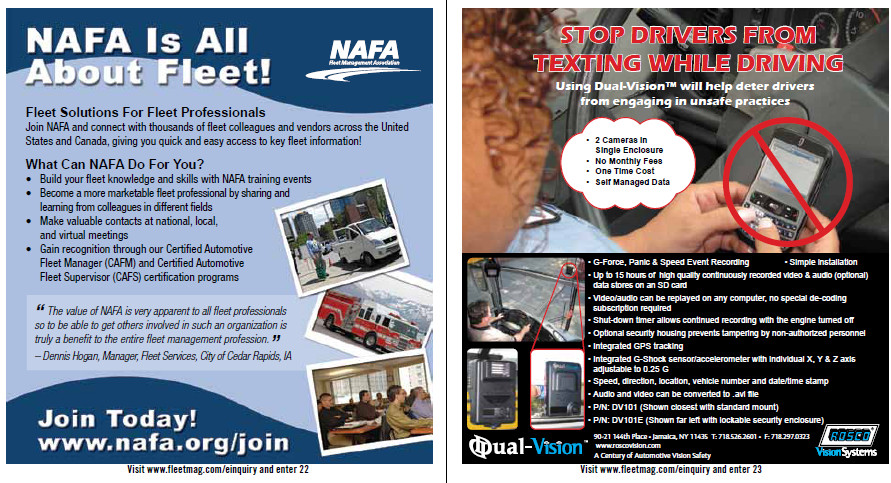
BUYER BEWARE
Not unlike other industries, the global economy brings a competitive market which naturally provides the North American vehicle lift buyer with a significant amount of product choice, says ALI’s O’Gorman. Before purchasing a lift, ALI encourages buyers to
consider end user safety and to investigate local building code and other applicable requirements of state and local authorities having jurisdiction.
“Don’t be fooled,” he warns. “In today’s buyer beware environment, without a third-party certification mark clearly stating compliance to both the current editions of ANSI/ALI ALCTV and ANSI/UL 201 (CAN/CSA STD C22.2 No. 68 for products installed in Canada), the lift owner is unprotected when it comes to marketer and reseller claims of compliance with the IBC, OSHA’s General Duty Clause, Canadian OSH regulations, ANSI standards and the Automotive Lift Certification Program.”
He also warns of some of the latest trends by some vehicle lift marketers and resellers. One is the claim of a “certified lift” that bears a thirdparty mark located on the power unit or another electrical accessory such as the motor.
“Both the Automotive Lift Institute and Underwriters Laboratories advise that a third-party certification mark (label) representing the automotive lift as an entire assembly must clearly bear the words ‘Automotive Lift,’” O’Gorman says. “The lift consumer should recognize that if the third-party mark does not include this verbiage, the automotive lift is not certified and the product as a system has not been evaluated for compliance against the electrical and mechanical safety requirements in effect at the time the product was produced.”
Additionally, the lift buyer should recognize that other product compliance marks found on a component of an automotive lift – including the UL, ETL, or CSA label on a power unit or other
“recognized component”
– “are as meaningless to code enforcement and product safety issues as the sales and marketing claims of ‘Certification Pending.’”
O’Gorman explains that a product’s certification can be classified as “pending” for months or
even years in some cases when there is the lack of appropriate drawings, stress calculations, electrical or mechanical product performance to published specifications, and/or other important aspects associated with producing a compliant product.
Although at first glance this may look harmless, he says it must be recognized that the lift “is not certified and the product as a system has not been evaluated for compliance against the electrical and mechanical safety requirements in effect at the time the product was produced. The ALI Automotive Lift Certification Program does not allow for the use of
symbols, marks or verbiage indicating a lift model certification is ‘pending.’”
HOMEWORK ASSISGNMENT
With all of the factors involved in deciding upon the appropriate vehicle lift it is very important to do your homework. Ask prospective vehicle lift manufacturers for a list of customers using lifts of interest, then make inquiries to them to see how satisfied they are
with the products. If possible, pay a visit to see a lift in operation. Made headto- head comparisons.
“Most people probably wouldn’t buy a car without taking a test drive,” says Perlstein of Mohawk Lifts. “Yet some shop owners are willing to have a vehicle over a technician’s head without having seen the lift they are considering buying or checking the quality of how it is manufactured.”
“Remember that you get what you pay for,” Rotary Lift’s Rylee says. “If a lift seems unusually inexpensive, ask why. A cheap lift will cost more in the long run due to excessive downtime and repair costs.”
Educated buying decisions come from identifying and choosing the best option among multiple alternatives. Deciding upon the appropriate vehicle lift is essential to technician safety, shop profitability and customer satisfaction.

